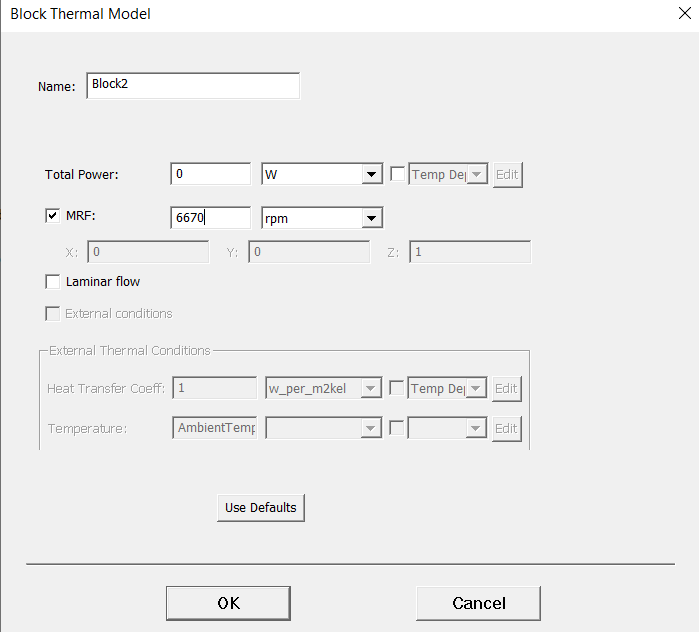-
-
April 18, 2025 at 10:19 am
-
April 22, 2025 at 4:16 pm
Iceman
Ansys EmployeeThanks for asking questions on Forum. You can use an Air Hollow Cylinder to enclose the rotating part, then apply MRF to the Hollow Cylinder. Please check our training material about Special Application: Advanced Fan Modeling on Ansys Learning Hub (https://learninghub.ansys.com/learn/courses/319/ansys-icepak-in-ansys-electronics-desktop-advanced). Thanks.-
April 22, 2025 at 6:42 pm
cunyi.ji
Subscriber-
April 22, 2025 at 7:03 pm
Iceman
Ansys EmployeeThe hollow cylinder should have lower meshing priority than the rotating solids. There is no need to input power for the air block BC as air doesn't generate heat. It is only used to apply MRF with proper RPM to make the air around rotating objects to rotate.
-
-
-
April 22, 2025 at 4:28 pm
Iceman
Ansys EmployeeIf you are doing conduction only, please check AEDT Mechanical which has Rotating Fluid boundary for motor applications. Thanks.-
April 22, 2025 at 6:44 pm
cunyi.ji
SubscriberThanks for the suggestion.
Since the convection is only considered with Heat Transfer Coefficient, which will be calculated using empirical equations, how accurate will be the results?-
April 22, 2025 at 7:06 pm
Iceman
Ansys EmployeeThe rotating fluid BC is applied to the gap between rotor and stator. For the exterior surface of rotor, you can apply a uniform HTC or a non uniform HTC mapped from Icepak. The uniform HTC will be less accurate but is very easy to set up.
-
April 22, 2025 at 7:10 pm
Iceman
Ansys EmployeeThe rotating bc can account for both conduction and convection of air in the gap between rotor and stator.
-
April 22, 2025 at 7:09 pm
Iceman
Ansys EmployeePlease check our AEDT Mechanical trainng material on Ansys learning hub if you are interested in this approach. Thanks.
-
-
-
- You must be logged in to reply to this topic.



-
2999
-
970
-
857
-
761
-
599

© 2025 Copyright ANSYS, Inc. All rights reserved.









